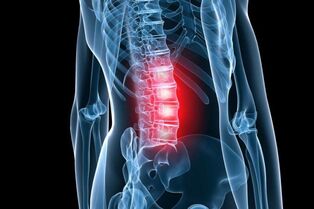
Low back pain affects many people, regardless of their age and profession. Lovers and office workers, young mothers and retired gardeners, writers and even athletes suffer from them. In any of these, pathological changes can occur in the bone tissue and cartilage of the spine, resulting in compression (compression) of the roots of the spinal cord, causing severe pain.
But the painful sensation is only an external manifestation of the disease. Often accompanied by other pathological syndromes that require mandatory treatment, their absence often leads to disability and the ability to take care of themselves. In other words, a person becomes disabled.
Description of the disease
Osteochondrosis is caused by improper compression of the spine, which results in compression of the intervertebral disc and adjacent tissues of the ligament apparatus. When squeezed, the fluid leaves the disc, which is responsible for its plasticity and is a source of tissue nutrition with the necessary micro-elements. With prolonged negative effects, the fibrous ring of the intervertebral disc loses its elasticity and density, and then ruptures, causing compression of the nerve endings. This causes pain, which is often accompanied by edema.
In addition, the outer edge of the vertebrae, with a load not distributed incorrectly, becomes overgrown with osteophytes - the growth of bone tissue. They also cause pain and restrict the movement of the spine, exacerbating the problem.
That is, the disease most often occurs with loads on the spine, which are spread incorrectly or stereotypically - monotonous and recurrent.
Cause
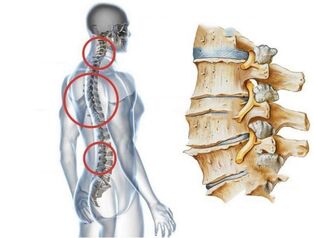
Do not assume that only strenuous physical activity or an inactive lifestyle, in which the skeletal muscle weakens, causes osteochondrosis of the lumbar spine. This also happens with people who are very active playing sports or working every day in their summer huts. If their movements are monotonous (lifting barbells, digging the ground), pressure occurs at the same point, in the area where the cartilage tissue is gradually destroyed.
There are other reasons as well. Among them:
- violation of calcium metabolism in the body;
- overweight or serious fluctuations in any direction while following a strict diet, pregnancy, sudden changes in hormone levels;
- spinal injury or curvature (scoliosis);
- severe one-time hypothermia or normal exposure to flu, dampness;
- depression, stress;
- constant physical load;
- bad offspring.
Note. Any strict diet based on the use of one product or a critical decrease in calorie intake not only leads to a sharp weight loss, but also the emergence of a lack of valuable trace elements in the body. Which is also bad for muscles and bones.
Symptoms
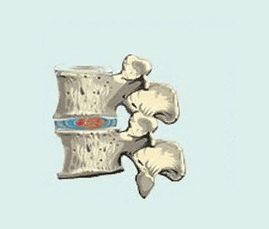
Osteochondrosis is rarely detected in time, because in its early stages it is not symptomatic. More precisely, there are symptoms, but it is difficult to associate with spinal problems. Therefore, they are most often accidentally found during a thorough examination for other health problems.
There are four stages of disease development. Let's explain each symptom.
| Stage | Description |
|---|---|
| First | In the first stage, the sweating process is disrupted, a person notices general abnormalities and rapid fatigue. Some patients talk about foot freshness that was previously unusual. |
| Second | In the second stage, intermittent back pain occurs, indicating that destruction of cartilage tissue begins. |
| Third | The third level is characterized by visible changes. Intervertebral hernias may appear, curvature of the spine often occurs, and in some cases the hump grows. |
| Fourth | The fourth level is the most difficult, when there is no need to talk about full healing due to irreversible framework changes. In addition to osteophyte proliferation and vertebral displacement, causing acute pain, problems arise in other organs of the pelvis. Often patients stop controlling the process of urination and defecation. |
Disease Treatment
The method of treatment of osteochondrosis is chosen depending on the stage of the disease and the severity of the pain. Conservative treatment brings good results only in the early stages. For example, if osteochondrosis of the lumbar spine is initially affected, you can get rid of it with the help of special physical exercises, correction of physical activity and weight, swimming, taking vitamin and mineral complex preparations.
When pain occurs, this is no longer enough. It must be removed along with the cause of its occurrence. Why are medicines, traditional physiotherapy techniques and alternative medicine methods used? And at the next stage, only surgical treatment can be done.
Physiotherapy
To relieve pain and swelling, increase the effect of the drug and reduce its dose, hardware physiotherapy methods are used as:
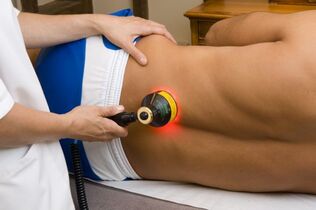
- ultrasound;
- laser;
- magnetic field effect;
- electrophoresis;
- manual therapy, massage.
Note. Massage helps relieve muscle spasms, improves blood circulation in the affected intervertebral disc area, and releases clogged ducts and nerves. This is done only with the help of hands, but a vacuum sequence is contraindicated for this disease.
Shock wave therapy
UHT is a relatively new treatment method, for the implementation of the most advanced equipment with programmable shock wave doses and systems for its guidance.
The bottom line is that shock waves destroy osteophytes, restoring cartilage tissue. But healthy spinal cord bones, as well as major arteries, can also be damaged. Therefore, it is very important to ensure that this technology is well developed in hospitals and its treatment is carried out by qualified and licensed specialists.
Alternative therapy methods
In addition to standard methods for treating lumbar spine osteochondrosis, there are also non-traditional methods. Such methods are often studied and have been used in many clinics. This includes mainly:
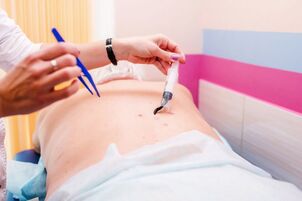
- hirudotherapy or leech therapy helps relieve inflammation and improve blood circulation;
- Acupuncture or acupuncture is an effective method to relieve pain, muscle tension and inflammation. This consists of the introduction of a special needle to certain biologically active points of the body;
- ozone therapy - injection of ozone-oxygen mixture. With the right dosage, this method inhibits osteophyte growth and relieves painful muscle tone.
In line with this method of treatment or to record the results achieved with their help, therapeutic gymnastics courses and therapeutic gymnastics are conducted.
Surgical Techniques
If the disease is started, and conservative treatment does not alleviate the patient's condition, they use surgical methods. You can not do it without treatment if after several months of active treatment, it is impossible to relieve pain and improve a person's general condition. And especially in cases when problems such as decreased potency in men, pelvic organ disorders, perineal numbness appear.
- Endoscopic microdiscectomy - removal of a herniated disc. This is minimally invasive surgery that relieves compression of the spinal cord or nerve root.
- Laser intervertebral disc laser reconstruction is almost indistinguishable operation. During the procedure, which takes place under local anesthesia, a thin needle is inserted into the affected disc, where it is irradiated with a laser that stimulates cartilage cell division.
- Foraminotomy is an operation to remove a process of a vertebra or part of a disc, which aims to release a pinched nerve.
- Vertebroplasty - the injection of bone cement into the destroyed vertebral tissue to strengthen it.
- Osteotomy - removal of diseased vertebrae and discs with subsequent replacement with prostheses.
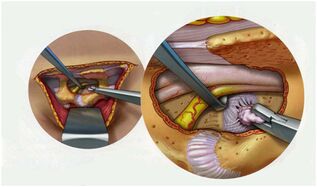
There are other methods aimed at stabilizing the vertebrae, decompressing it, removing osteophytes, etc. Any of these require a long recovery period. After undergoing spinal surgery, patients may not get up, walk, bend over, or experience physical stress for long periods of time. This leads to muscle relaxation and partial loss of motor function, which requires support and recovery. Thus, at the end of the postoperative period, the recovery and recovery period begins, its task is to fully restore motor function, and to prevent complications in the pelvic organs.
At this stage, some of the conservative treatment methods described above are applied, proper posture is developed, normal movement is improved. In this case, the patient is recommended to wear a special fitting corset. After that, a set of exercises is done, which should be done daily and throughout life to prevent the recurrence of the disease.

























